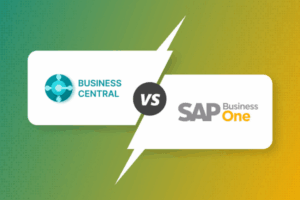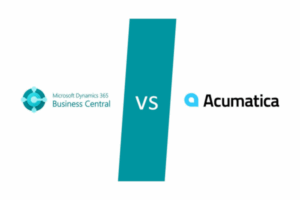Understanding the True Cost of Medical Device ERP
The cost of ERP software goes beyond the monthly or annual subscription. You need to think in terms of Total Cost of Ownership (TCO).
TCO includes:
- Subscription or license fees
- Implementation services
- Data migration
- Training and support
- Validation and compliance documentation
When evaluating medical device ERP cost, be sure to consider all of the above not just the price tag on the software.
Typical Medical Device ERP Cost Ranges by Company Size
Small manufacturers (under $10M revenue):
- Cloud ERP subscription: $2,000–$6,000/month
- Implementation: $50,000–$100,000
Mid-sized manufacturers ($10M–$100M revenue):
- Cloud ERP subscription: $5,000–$15,000/month
- Implementation: $100,000–$250,000+
Large enterprises ($100M+ revenue):
- Highly customized ERP solutions can run over $1M in implementation alone
- Ongoing costs for compliance, maintenance, and upgrades are substantial
These are ballpark estimates. Your exact medical device ERP cost will depend on the complexity of your operations, number of users, and regulatory needs.
Factors That Impact Medical Device ERP Cost
Several factors influence how much you’ll pay for ERP:
- Compliance requirements: Support for FDA, ISO 13485, and EU MDR adds cost for validation tools and audit readiness.
- Validation and audit tools: Pre-configured validation templates save time but often require an upfront investment.
- Customization needs: Every modification to workflows, reports, or dashboards adds time and cost.
- Deployment method: Cloud ERP is more affordable upfront, while on-premise has larger initial costs but fewer recurring fees.
- User count: ERP pricing often scales with the number of named or concurrent users.
These details make a big difference in your final price.
Hidden Costs to Watch For
Some ERP vendors quote a low monthly price but leave out critical expenses. When calculating the real medical device ERP cost, ask about:
- Third-party integrations: QMS, LIMS, or PLM systems often come at additional cost and may require extra configuration.
- Data migration: Cleaning and migrating legacy data can take weeks of effort and is rarely included in initial estimates.
- Custom reports or dashboards: Most standard packages don’t include detailed compliance reports out of the box.
- Training: Many vendors charge separately for in-person, remote, or role-specific training.
- Future upgrades: Understand whether upgrades are included and how they might affect validation.
Clarity upfront will help you budget smartly.
How to Maximize ROI from Your ERP Investment
Price is important, but value is what really counts. Here’s how to get the most from your ERP spend:
- Choose an ERP built for medical devices: Systems with built-in support for DHRs, DHFs, traceability, and validation offer long-term efficiency.
- Work with a partner who understands your industry: This minimizes delays and costly errors during setup and go-live.
- Invest in training and change management: Well-trained users are more likely to fully adopt the system and generate ROI.
- Track KPIs post-implementation: Focus on metrics like defect rate, recall response time, and audit readiness.
Sample Medical Device ERP Cost Breakdown (Example)
Let’s say a mid-sized medical device company implements a cloud ERP solution and wants to calculate ROI over three years.
Upfront implementation cost: $120,000
Annual subscription: $120,000/year
Three-year total cost: $480,000
Projected benefits:
- Reduced compliance fines and manual work: $100,000/year
- Increased production efficiency: $60,000/year
- Inventory and waste reduction: $80,000/year
- Total 3-year benefit: $720,000
ROI formula:
($720,000 – $480,000) / $480,000 x 100% = 50% ROI
This example shows how a focused implementation can pay off within a few years.
Comparing Pricing Models: What to Know
ERP vendors may offer different pricing tiers. Understand your options:
- Flat-rate pricing: One fixed monthly or annual fee, typically used by smaller vendors targeting SMBs.
- Modular pricing: Pay only for what you use. This is ideal if you’re scaling or need limited functionality now with plans to grow.
- User-based pricing: Charges based on the number of users, either named or concurrent. Clarify the difference and what’s included.
Ask for detailed quotes and contract terms so you’re not surprised later.
Final Thoughts
Understanding medical device ERP cost is key to choosing the right solution. Don’t just compare sticker prices—evaluate total cost, expected ROI, and vendor expertise.
When you choose a system that supports compliance, scalability, and your unique workflows, the investment is more than worth it.
Want to get a tailored estimate based on your needs? Alchemy 365 offers ERP for medical device companies built on Microsoft Business Central. Let’s talk about your goals.





